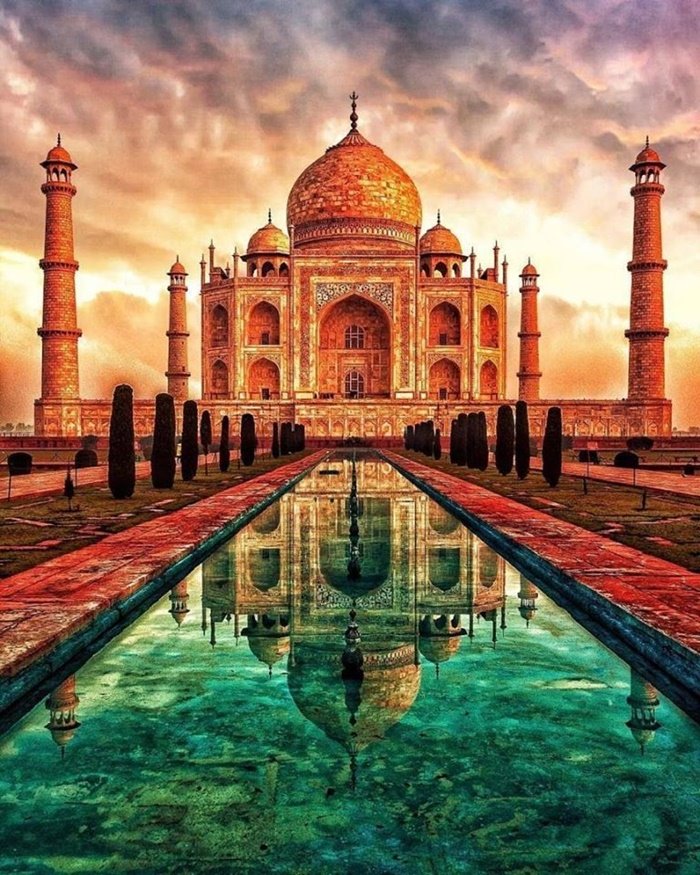The Taj Mahal, situated in Agra, India, stands as a masterpiece of global architecture, renowned for symbolizing Emperor Shah Jahan’s enduring love for his wife, Mumtaz Mahal. Erected in the 17th century, the Taj Mahal is celebrated for its exquisite beauty, intricate craftsmanship, and symmetrical design.

.
.Known as the “Wonder of the World,” the Taj Mahal distinguishes itself through a harmonious blend of architectural styles, seamlessly incorporating Islamic, Persian, Indian, and Mughal influences. This amalgamation creates a stunning fusion of art and culture, evident in the gleaming domes, minarets, and intricate carvings on the white marble structure that epitomize Mughal architecture.
The Taj Mahal’s grandeur and scale contribute significantly to its status as a global marvel. Surrounded by lush gardens and a reflective pool, the main mausoleum exudes a serene and ethereal ambiance. The meticulous craftsmanship, from the detailed marble inlays to the delicate calligraphy on its walls, showcases the precision and attention to detail by the skilled artisans.

.Additionally, the Taj Mahal holds immense historical and cultural importance. Constructed as a testament to love and devotion, it involved the efforts of thousands of skilled craftsmen. Serving as a symbol of India’s rich heritage and architectural excellence, the monument attracts millions of visitors worldwide who come to admire its beauty and experience its timeless charm.
